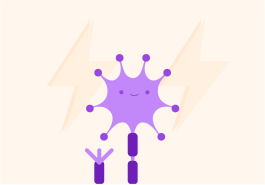YOU ARE LEARNING:
Nervous System Function

Nervous System Function
The nervous system function comprises of a series of steps from a stimulus leading to a response.
In this lesson, we will be looking at the processes that have to happen in the nervous system for someone to take a drink of water.
Firstly, what might we describe the glass of water as for someone who wants to take a drink?

Stimuli (plural of stimulus) are detected by receptors.
If your skin cells are receptors when you touch a hot plate, what do you think the receptor is when you drink water?

The receptors (in this case the eyes) send electrical impulses through the peripheral nervous system to the central nervous system.
Through which neurone do they first transmit their signal?

The sensory neurone then passes its electrical message to the relay neurone. Where is the relay neurone located?

The central nervous system "decides" an action to be taken. What is another name for the central nervous system?

The relay neurone passes the action message back down to the effector which will produce the action. To which neurone does the relay neurone pass its message?

The motor neurone will stimulate an organ, tissue or cell to take an action as coordinated by the central nervous system. What is the term for this organ, tissue or cell?

In the drinking water example, where would the motor neurones be headed towards?

To summarise...
Receptors receive information about a stimulus and send this information to the central nervous system (coordinator) via sensory neurones. The CNS coordinates relay neurones to send an impulse back down motor neurones to an effector to produce a response to the stimulus.

